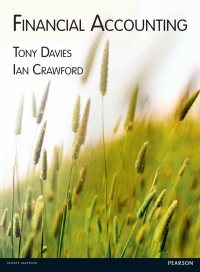Answered step by step
Verified Expert Solution
Question
1 Approved Answer
Please help me to answer question 9 Bank A Balance Sheet Assets Liabilities + Net Worth Uses of Funds Sources of Funds Reserves $65,000 Demand

Please help me to answer question 9
Bank A Balance Sheet Assets Liabilities + Net Worth Uses of Funds Sources of Funds Reserves $65,000 Demand Deposits Other Deposits $150,000 $1,000,000 Treasury Bonds $85,000 Borrowing From the Fed From Fed Funds Market $50,000 $100,000 Loans $1,350,000 Net Worth $1,500,000 Total $200,000 $1,500,000 Total Assets Uses of Funds Bank B Balance Sheet Liabilities + Net Worth Sources of Funds $10,000 Demand Deposits Other Deposits Reserves $100,000 $940,000 Treasury Bonds $35,000 Borrowing From the Fed From Fed Funds Market $0 $30,000 Loans $1,255,000 Net Worth $1,300,000 Total $230,000 $1,300,000 Total Question 3 1 pts Suppose that in a country, there are only two banks, Bank A and Bank B. The file HW8 Bank Balance Sheets shows their balance sheets. Here are some simplifying assumptions to make our lives a bit more bearable: 1. The country uses dollars as its unit of accounts. 2. There are no travelers' checks in this country. 3. There are no fancy accounts in this country like money market mutual funds deposits. 4. Other deposits consist of saving deposits by households as well small denomination (less than $100,000) time deposits. 5. The amount of currency held by the non-bank public is $25,000. This amount will remain the same throughout our story. 6. All the reserves are held at the central bank. They also call their central bank "the Fed". 7. There are no reserve requirements (the required reserve ratio is zero). In this country, the M1 money supply equals 50000.00 dollars and the M2 money supply equals 0.00 dollars. Question 4 1 pts Consider the information in Question 3. Bank A lends $50,000 to Anna by crediting her checking account by $50,000. After this loan is made, but before Anna withdraws the money, M1 money supply will equal 325000.00 dollars and M2 money supply will equal 2265000 dollars. Question 9 1 pts Consider the information in Question 3 and ignore all those things that happened in the previous questions. Start from the beginning. Last year Kevin had borrowed $50,000 from Bank B. The loan is due today. Kevin has a saving account at Bank A. He withdraws $50,000 from his saving account at Bank A and pays back his loan to Bank B. After the loan is paid back to Bank B and after all those inter-bank settlements, here is what happens to the two monetary aggregates: M1 money now = = dollars M2 money now = dollars. Compare these numbers to those in Question 4. What do you conclude? Bank A Balance Sheet Assets Liabilities + Net Worth Uses of Funds Sources of Funds Reserves $65,000 Demand Deposits Other Deposits $150,000 $1,000,000 Treasury Bonds $85,000 Borrowing From the Fed From Fed Funds Market $50,000 $100,000 Loans $1,350,000 Net Worth $1,500,000 Total $200,000 $1,500,000 Total Assets Uses of Funds Bank B Balance Sheet Liabilities + Net Worth Sources of Funds $10,000 Demand Deposits Other Deposits Reserves $100,000 $940,000 Treasury Bonds $35,000 Borrowing From the Fed From Fed Funds Market $0 $30,000 Loans $1,255,000 Net Worth $1,300,000 Total $230,000 $1,300,000 Total Question 3 1 pts Suppose that in a country, there are only two banks, Bank A and Bank B. The file HW8 Bank Balance Sheets shows their balance sheets. Here are some simplifying assumptions to make our lives a bit more bearable: 1. The country uses dollars as its unit of accounts. 2. There are no travelers' checks in this country. 3. There are no fancy accounts in this country like money market mutual funds deposits. 4. Other deposits consist of saving deposits by households as well small denomination (less than $100,000) time deposits. 5. The amount of currency held by the non-bank public is $25,000. This amount will remain the same throughout our story. 6. All the reserves are held at the central bank. They also call their central bank "the Fed". 7. There are no reserve requirements (the required reserve ratio is zero). In this country, the M1 money supply equals 50000.00 dollars and the M2 money supply equals 0.00 dollars. Question 4 1 pts Consider the information in Question 3. Bank A lends $50,000 to Anna by crediting her checking account by $50,000. After this loan is made, but before Anna withdraws the money, M1 money supply will equal 325000.00 dollars and M2 money supply will equal 2265000 dollars. Question 9 1 pts Consider the information in Question 3 and ignore all those things that happened in the previous questions. Start from the beginning. Last year Kevin had borrowed $50,000 from Bank B. The loan is due today. Kevin has a saving account at Bank A. He withdraws $50,000 from his saving account at Bank A and pays back his loan to Bank B. After the loan is paid back to Bank B and after all those inter-bank settlements, here is what happens to the two monetary aggregates: M1 money now = = dollars M2 money now = dollars. Compare these numbers to those in Question 4. What do you concludeStep by Step Solution
There are 3 Steps involved in it
Step: 1

Get Instant Access to Expert-Tailored Solutions
See step-by-step solutions with expert insights and AI powered tools for academic success
Step: 2

Step: 3

Ace Your Homework with AI
Get the answers you need in no time with our AI-driven, step-by-step assistance
Get Started


